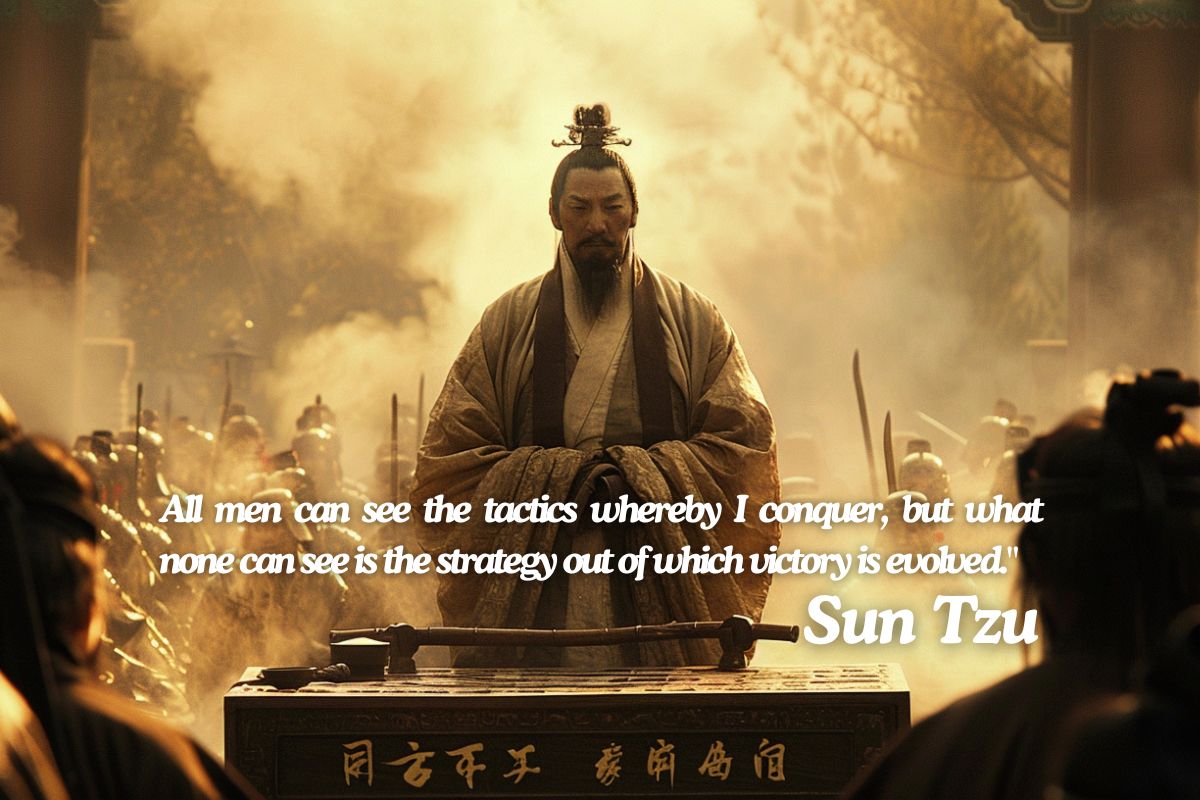Marketing Strategy vs. Marketing Tactics: Understanding the Crucial Difference
When diving into the realms of marketing, one can’t help but revisit the timeless debate from university days: the distinction and relationship between strategy and tactics. This fundamental concept is eloquently captured in Sun Tzu’s “The Art of War.”
Note:
This article features content from the Marketing Made Clear podcast. You can listen along to this episode on Spotify:
Brace Yourself for a Classic Insight
Sun Tzu profoundly emphasises the interplay between strategy and tactics, stating:
“All men can see the tactics whereby I conquer, but what none can see is the strategy out of which victory is evolved.”
This quote encapsulates the essence of the discussion. While tactics are the visible, actionable steps we take, strategy is the overarching plan that guides these actions. Both elements are essential for success, working in tandem to achieve desired outcomes.
Strategy and Tactics: A Symbiotic Relationship
It’s not about choosing between strategy and tactics; it’s about understanding how tactics are driven by strategy. These two components are interdependent, each playing a crucial role in the journey toward achieving your marketing goals.
The Role of Strategy
Strategy provides the direction and framework within which tactics are employed. Without a solid strategy, even the most brilliant tactics can fall flat, becoming disjointed efforts that lack cohesion and purpose. A well-defined strategy ensures that every action taken is aligned with the broader objectives of the organisation.
The Importance of Tactics
On the flip side, relying solely on strategy without implementing tactics leads nowhere. Tactics are the actionable steps that propel the strategy forward. They are the executional elements that bring the strategic vision to life. Without tactics, a strategy remains just a plan on paper, with no real-world impact.

The Pitfalls of Ignoring Strategy or Tactics
Strategy Without Tactics
If a team focuses only on strategy, they risk becoming perpetual planners who never see their goals materialise. Strategy without tactics is akin to having a road map but no vehicle to travel. Planning is essential, but execution is where progress is made.
Tactics Without Strategy
Conversely, employing tactics without a guiding strategy leads to aimless activity. Tactics in isolation can appear productive initially but often lack the strategic direction needed for sustained success. This approach is similar to setting sail without a compass, resulting in rudderless or directionless efforts that are likely to falter in the long run.
Achieving Balance: The Key to Effective Marketing
To succeed in marketing, one must strike a balance between strategy and tactics. A well-crafted strategy should inform and shape the tactics employed, ensuring every action taken is purposeful and aligned with broader objectives. Similarly, tactics should be adaptable and responsive, allowing for the effective implementation of the strategic vision.
By understanding and leveraging the symbiotic relationship between strategy and tactics, businesses can create cohesive, effective marketing campaigns that drive meaningful results.
Conclusion
In summary, the relationship between marketing strategy and tactics is not a matter of choosing one over the other but recognising their interdependence. Strategy provides the direction, while tactics are the steps taken to reach the destination. Together, they form the foundation of successful marketing efforts.
Embrace this dynamic duo in your marketing endeavors to navigate the path to victory effectively.
Up Next:
What is a Marketing Strategy


